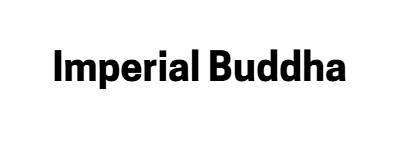You know that feeling when you see a logo, a website, or even a business card, and instantly, something clicks? You can almost feel the brand behind it. That’s the magic of graphic design—the unsung hero that shapes the very DNA of your brand. But what’s behind the art? Is it all just pretty pictures and cool fonts, or is there something deeper at play? Spoiler: It’s both—and it’s more than you think.
Graphic design isn’t just about what looks good; it’s about communicating who you are, what you stand for, and how you make people feel. In this post, we’re diving into how design elements like typography, color theory, and layout are the building blocks of your brand’s identity.
1. Typography: Fonts Are Your Brand’s Voice
Let’s start with fonts. They’re often underestimated, but trust us, typography is one of the most powerful tools in graphic design. It’s like the tone of voice for your brand—bold and commanding, playful and friendly, or sleek and sophisticated. The right font makes a statement, while the wrong one can leave your audience scratching their heads.
Pro Tip:
- Serif fonts (those with little “feet” or “tails”) often convey tradition, reliability, and formality. Think of brands like The New York Times or IBM.
- Sans-serif fonts (those clean and modern fonts without extra flourishes) are often seen as approachable, simple, and contemporary—like Google or Apple.
- Script fonts (the cursive-y ones) can be elegant and personal, but they can also get too fancy. Use them sparingly.
How to Use It:
Pick a font that reflects your brand’s personality. If your brand is luxurious, go for something elegant but not overly fussy. If you’re quirky and fun, a playful sans-serif might be your jam. The key? Stay consistent. Mixing too many fonts will make your brand look chaotic, and we all know that’s not the vibe you want.
2. Color Theory: The Psychology of Hues
Let’s get into color. Did you know that color can influence how people feel, think, and even act? Yes, it’s that powerful. Think about the calm blue of Facebook or the energy-packed red of Coca-Cola. Colors trigger emotions, and choosing the right palette for your brand is crucial to building the right perception.
Pro Tip:
- Red is exciting, urgent, and attention-grabbing—perfect for fast-food chains or entertainment. But don’t overdo it; too much red can feel overwhelming.
- Blue is trustworthy, calming, and professional—think banks and tech companies.
- Yellow is cheerful and optimistic—great for brands that want to feel friendly and welcoming.
- Green symbolizes health, growth, and sustainability—often used by eco-friendly and organic brands.
How to Use It:
Choose a color palette that aligns with your brand’s emotions. It’s not just about what looks good—it’s about what makes your audience feel. Once you’ve picked your primary color, build a palette that complements it with secondary shades. Just like with typography, consistency is key. A well-chosen color palette can do wonders for recognition.
3. Layout: The Blueprint of Your Brand’s Identity
Now, let’s talk about layout. Imagine your brand is a house—layout is the floor plan. It’s how all the elements of your design fit together to guide the viewer’s eye, convey information, and tell your brand’s story. A well-organized layout makes a website easy to navigate, a poster easy to read, and a brochure easy to absorb.
Pro Tip:
- Hierarchy is key in layout design. What do you want people to notice first? Put that at the top, make it bigger, bolder, or a different color.
- Use whitespace wisely—sometimes less really is more. It gives your design room to breathe and helps important elements stand out.
- Alignment is your friend. Nothing looks messier than things being off-center for no reason. A clean, aligned design creates a sense of order and professionalism.
How to Use It:
Whether it’s a website, flyer, or logo, the goal is to create a design that is easy to understand at a glance. Create a clear visual flow that guides the viewer through your message. Prioritize what’s important, and make sure everything has its place.
4. Bringing It All Together: How Graphic Design Tells Your Brand’s Story
At the end of the day, graphic design is all about communication. Typography, color theory, and layout all work together to send a consistent, coherent message about who your brand is and what it stands for. It’s about evoking a feeling, creating a connection, and making people want to engage with your brand.
Here’s how to make sure your design hits the mark:
- Consistency is key: Use the same fonts, colors, and layout style across all platforms—whether it’s social media, your website, or printed materials.
- Simplify, don’t overcomplicate: Great design is often about restraint. Too much going on? It’ll confuse people, and they’ll click away.
- Tell a story: Every design element should work towards your brand’s bigger narrative. Whether it’s playful, luxurious, eco-friendly, or professional—your design should echo that story at every touchpoint.
Final Thoughts: Design Is the DNA of Your Brand
Great graphic design doesn’t just make things look pretty—it helps create a powerful, emotional connection with your audience. By mastering typography, color theory, and layout, you can build a brand identity that speaks louder than words. You don’t need to be a design expert to get it right—just keep these tips in mind, and you’ll be well on your way to designing a brand that people remember.
Ready to give your brand the graphic design makeover it deserves? We’ve got the expertise to help you nail your design DNA—contact us today!
